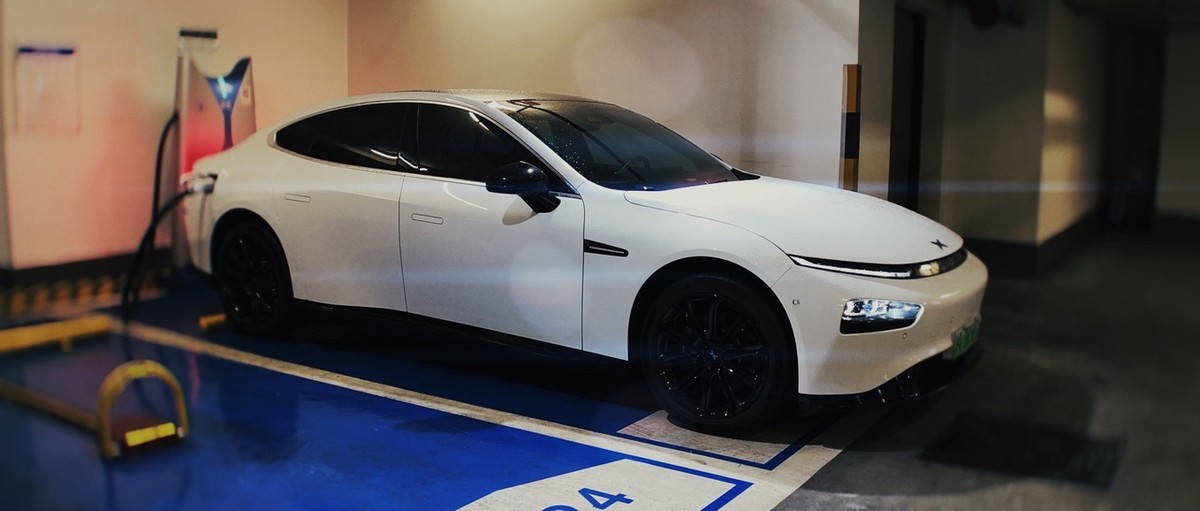Review of Volkswagen ID4 in China
Hello everyone, this is my first detailed car review, or rather, some of my own experiences. Let me introduce myself first. I am a car enthusiast and a new energy vehicle owner. I drive a Xpeng P7, which I purchased at the end of 2020. In the nearly two years since I bought my new energy vehicle, I have paid attention to and experienced many new energy vehicles. Additionally, because I have long been interested in cars, I also have some knowledge in this area.
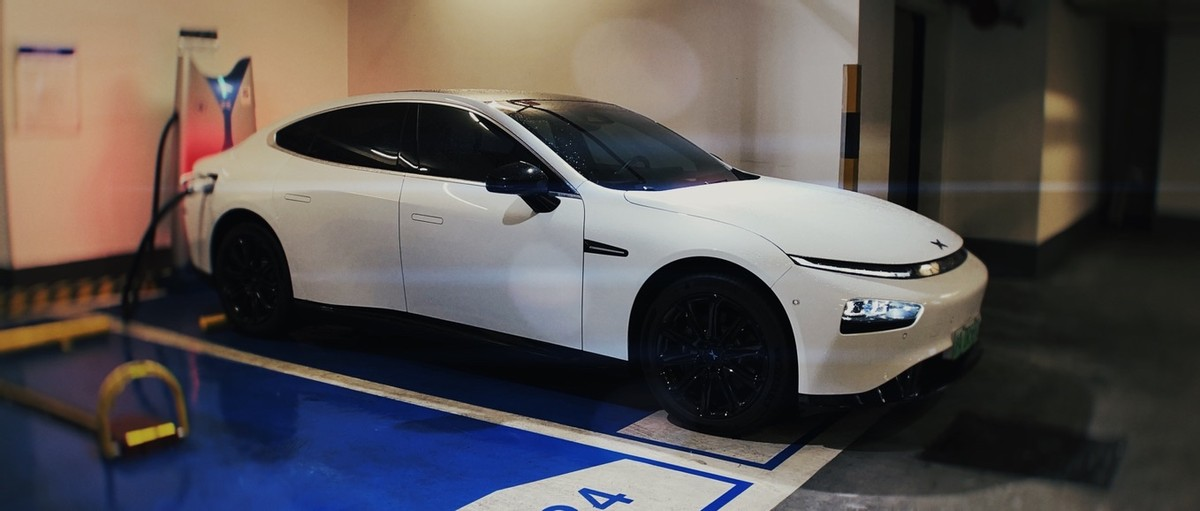
I am very happy to have been invited by Garage 42 to experience the Volkswagen ID4. In this review, I hope to share with you from my perspective as a user of a new energy vehicle from a traditional car company, Volkswagen’s first response in the Chinese market. This article will not contain a large amount of professional descriptions as I am not a professional auto critic. Instead, I hope to use easily understood language to share with you what I experienced.
Before starting, I need to confess my initial bias. Originally, I had no interest in Volkswagen’s new energy vehicles and didn’t spend any time researching them. I prejudicially thought that they were just internal combustion engines converted to electric vehicles…
But after receiving the car and having a garage colleague introduce it to me for 10 minutes, there was a 180-degree change in my thinking that I never expected. During the 5 days that I deeply experienced this car, there were countless details that impressed me…
So, if you were like me before, with no prior interest in Volkswagen’s new energy vehicles, and even thought that traditional car companies were dead in the era of smart cars, then I believe this article can bring you a whole new understanding!
First Impression
The pickup time was in the evening. As the garage colleague approached the ID4 with the car key, the slowly brightening logo, daytime running lights, and slowly raising “eyes” made me feel like the car had come to life. The lighting of this car is very rich, not only with a continuous front and rear light belt but also an illuminated floor mat that creates a sense of ceremony. Even the door handles have lighting.

When entering the car and closing the door, the interior reading light is very bright (thumbs up), which can illuminate the entire cabin (as a comparison, the interior lighting of my XPeng P7 is only slightly brighter than a mosquito killer 😅), making it very convenient for cleaning up the interior / finding things.
As I closed the door, what caught my eye was a light strip under the windshield, which can react differently in different situations. When I start the car, a beam of light opens up, turning from white to blue and gradually extinguishing; during voice conversations, it flashes with the sound (there are many other rich dynamic effects that are difficult to describe in words, I will leave it to you to explore and experience). This effect gave me a feeling of a sci-fi movie robot that can interact with humans, making me feel that this car is no longer just a cold and lifeless transportation tool.
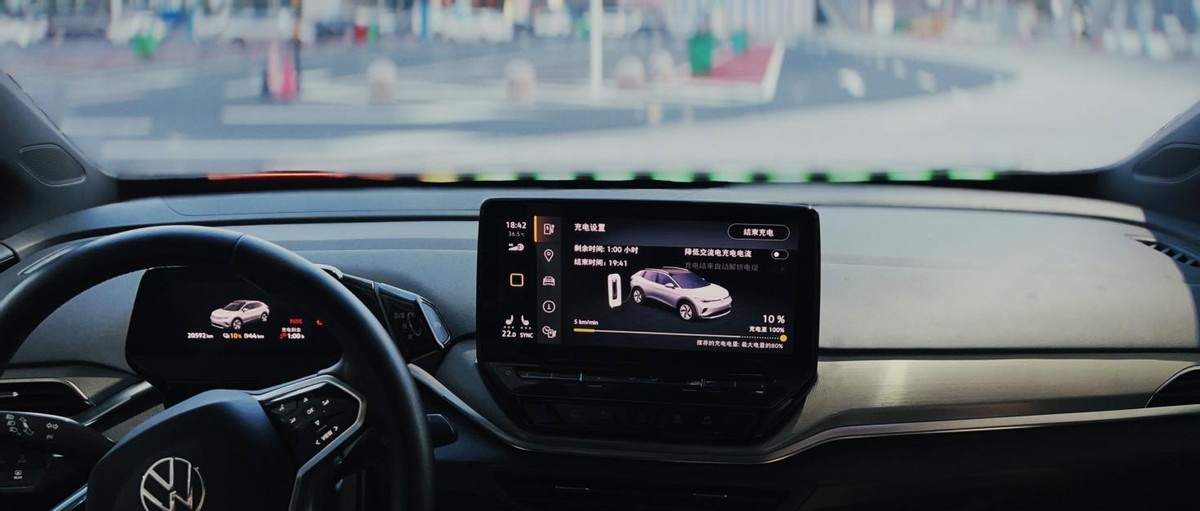
At the same time, the ambient lighting inside the car can adjust colors and brightness in layers, and everyone can find their own matching colors. As someone who hasn’t paid much attention to Volkswagen in recent years, I couldn’t help but exclaim whether this is still the Volkswagen I know, why does it have more bells and whistles than my new energy electric car? (Hey P7, take a look at what they are doing)
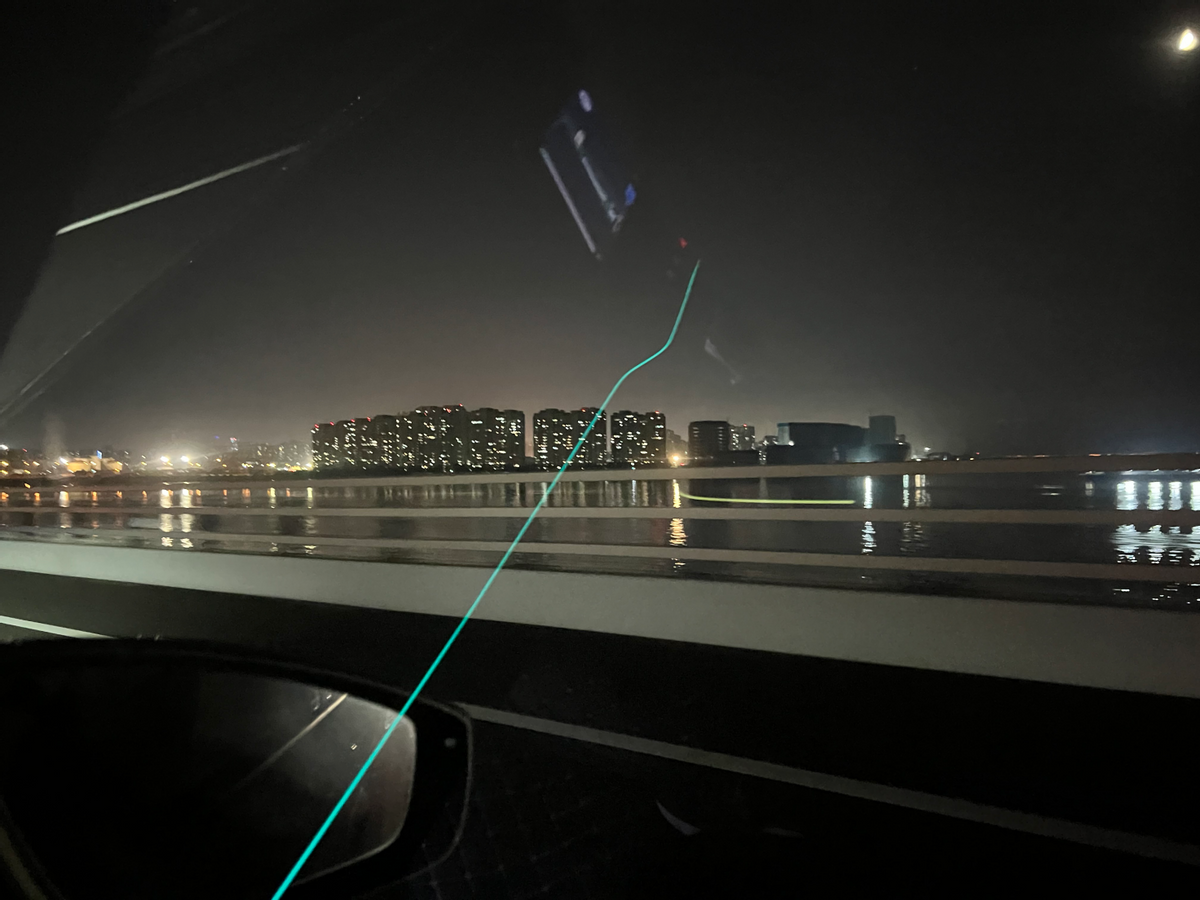
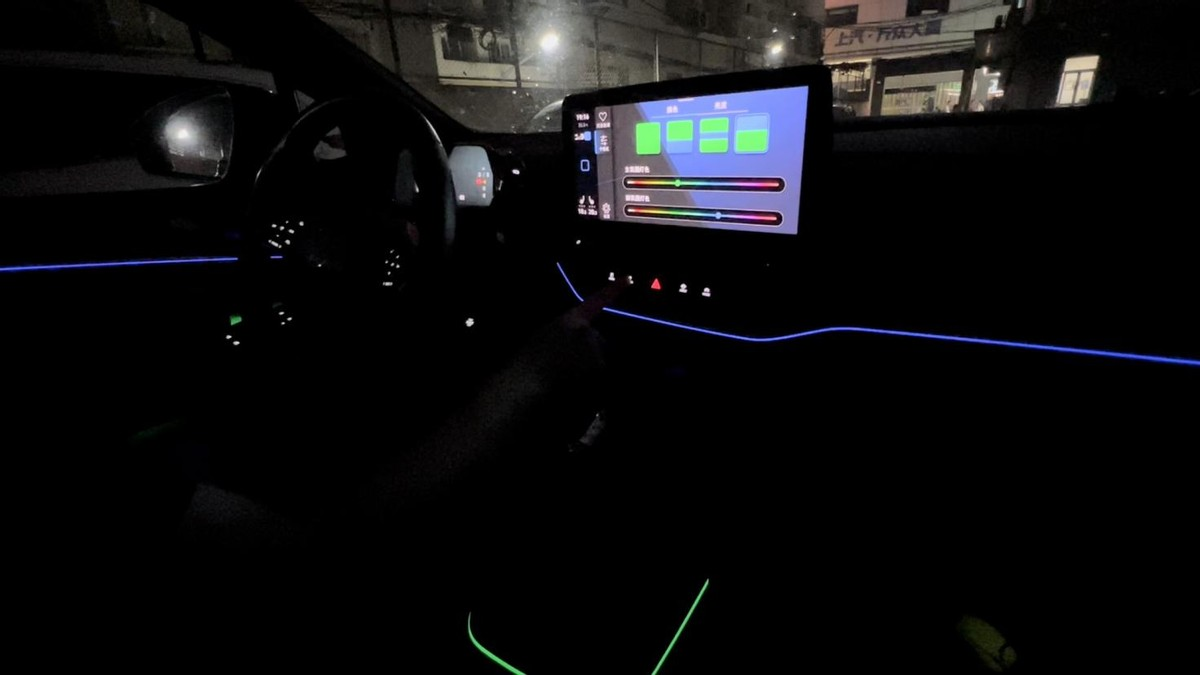
Before driving away, my colleague in the garage quickly went over some of the configuration and operation methods of this car: like the new energy electric cars we are familiar with, ID4’s seat cushion has a sensor. After sitting in the driver’s seat, you can start it up by tapping the brake pedal. However, unlike other similar cars, ID4 also has a “ignition button” on the steering column, similar to a traditional car, making it convenient for the driver to temporarily exit the car, while the passengers (front seat) can still keep the car on.
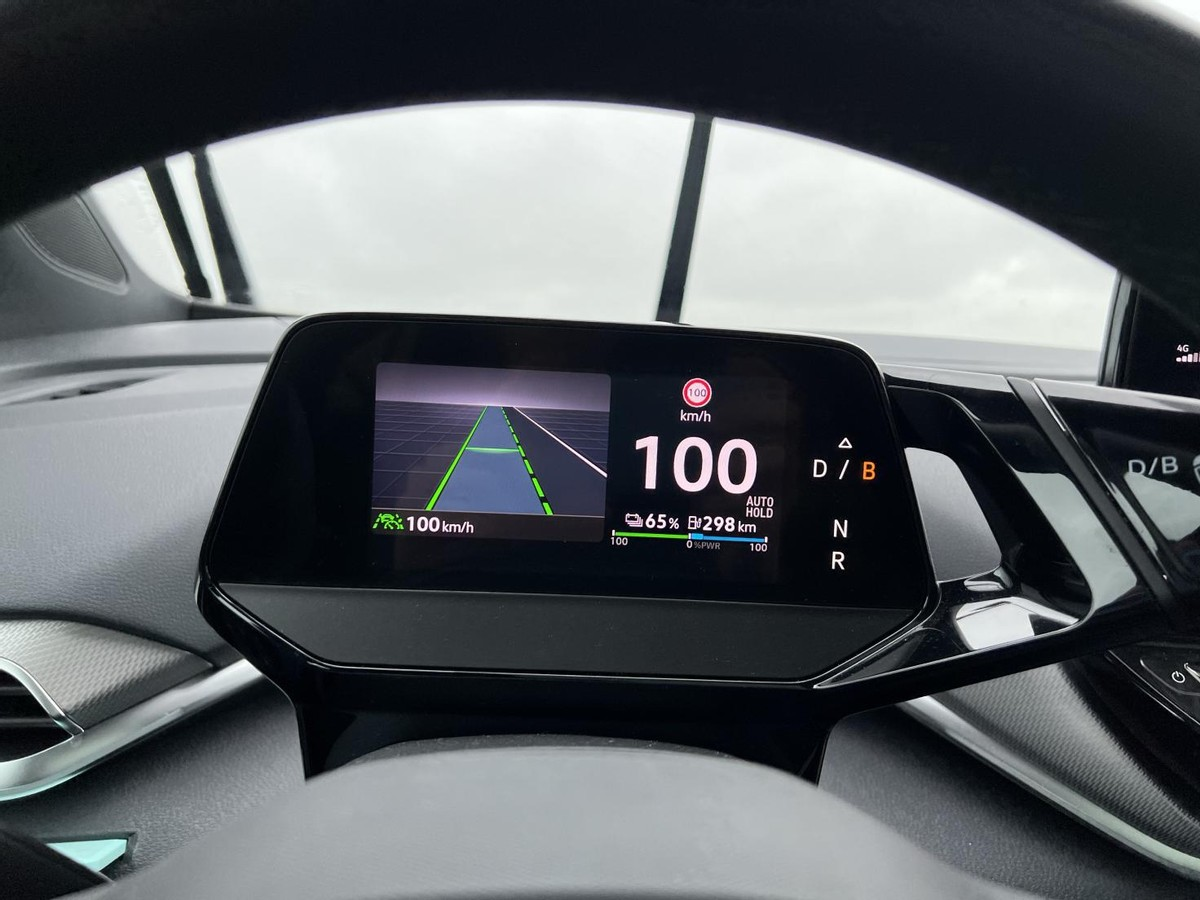
The driver has a small instrument panel, which is only 5.3 inches in size, but is sufficient to display all the information needed for driving. Moreover, because it is small, it can be fixed together with the steering wheel. When adjusting the position of the steering wheel, the position of the instrument panel will also move with it to ensure that it will not be blocked by the steering wheel (thumbs up again, @P7).# About the In-car System
The screen of the in-car system tilts towards the driver at a reasonable angle, making it easily accessible. (We’re talking about you, XPeng!) The system’s performance is also surprisingly smooth, with animations running very smoothly. The ID4 comes with Gaode (Nes) maps as its navigation provider, and the screen UI color changes automatically to match the ambient lighting conditions. The system also includes gesture controls, which allow for actions such as page flipping to be performed without physical contact. The high-resolution screen and oleophobic coating add a pleasant tactile experience.
The design of the driver assistance interface is novel, but it may confuse people who are seeing it for the first time. However, after a brief introduction, the interface is very intuitive. (Although it does occupy a physical button that could be better used elsewhere.)
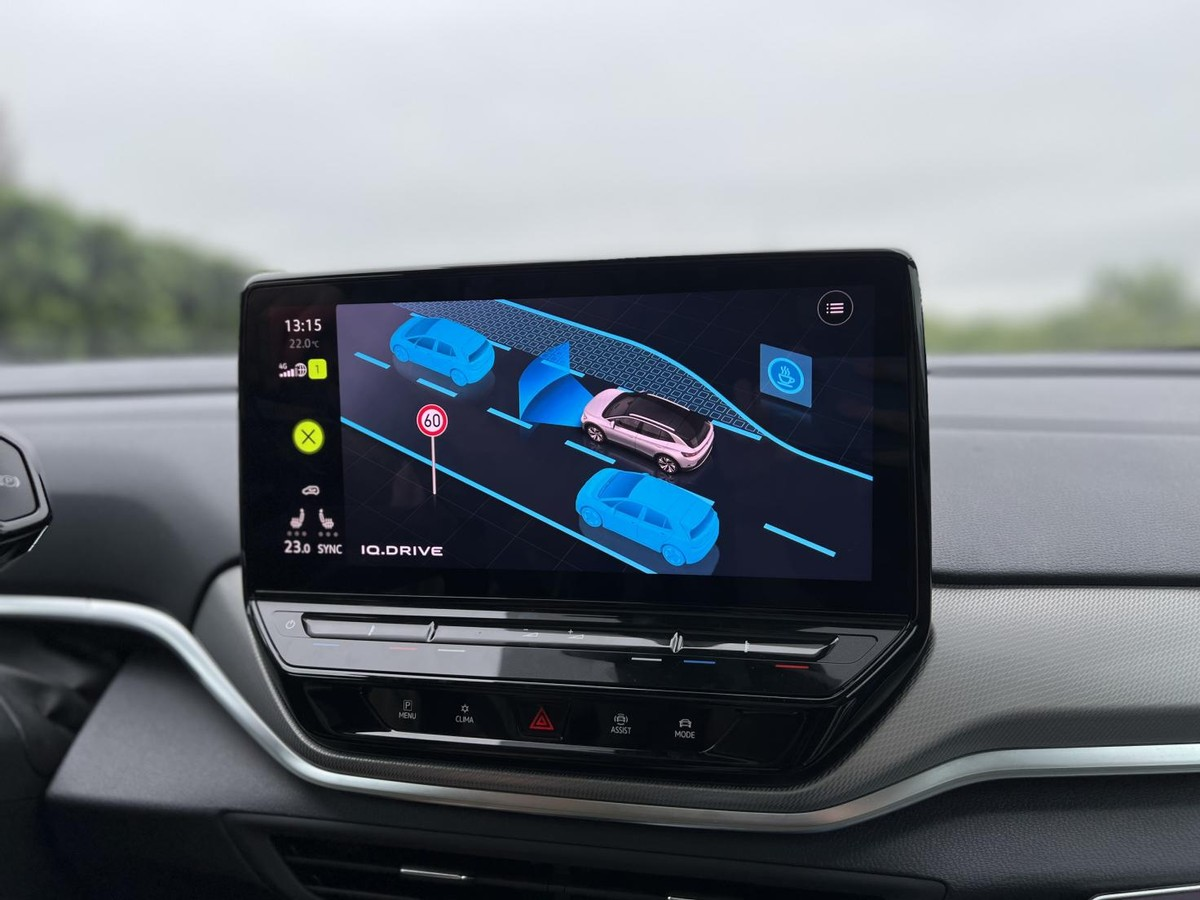
The majority of controls in the car are touch-sensitive, including the light controls on the left and the controls located below the central display. The buttons on the steering wheel are both touch-sensitive and pressure-sensitive, similar to a MacBook touchpad. When pressed, a linear motor provides tactile feedback, and the user can also perform swipe gestures to adjust the volume or the driving speed. It’s easy to use and generally user-friendly, although the lack of backlighting for the temperature and volume controls can be an issue when driving at night.
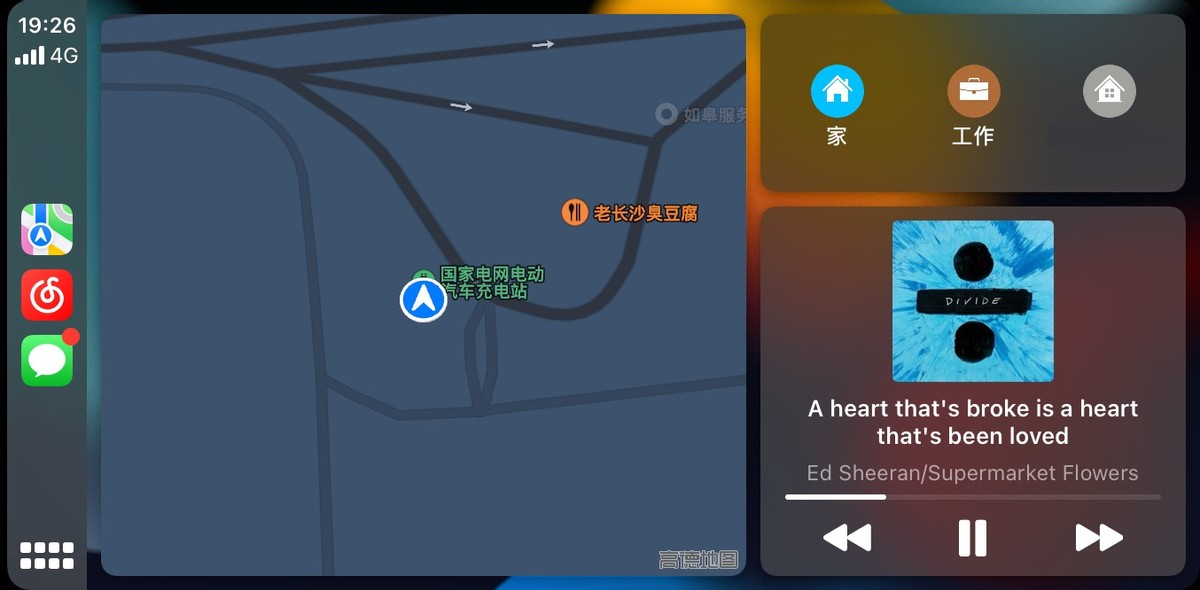
At first, I was concerned that the in-car system of the ID4 might not be as intelligent as XPeng’s car, but Volkswagen simply threw CarPlay in my face, making me put down my critical pens and thank the heavens. However, there was a minor issue during the first time I connected to CarPlay, which was resolved after a restart of the in-car system. (This is the uniqueness of new energy vehicles. Fortunately, the in-car system has been running smoothly without further issues, both wirelessly and Wired. Reminiscing about the Model Y days, it would crash five times in three days and had no CarPlay, not to mention the navigation…) Volkswagen’s in-car system also has its own application store, which includes entertainment apps such as karaoke and video playback. It’s compatible with your home’s remote control and has all the necessary features, and even a few extra fancy features.
Regarding other features, there are four USB-C ports in the car, with a tested output power of 15W, which is relatively fast for charging an iPhone.
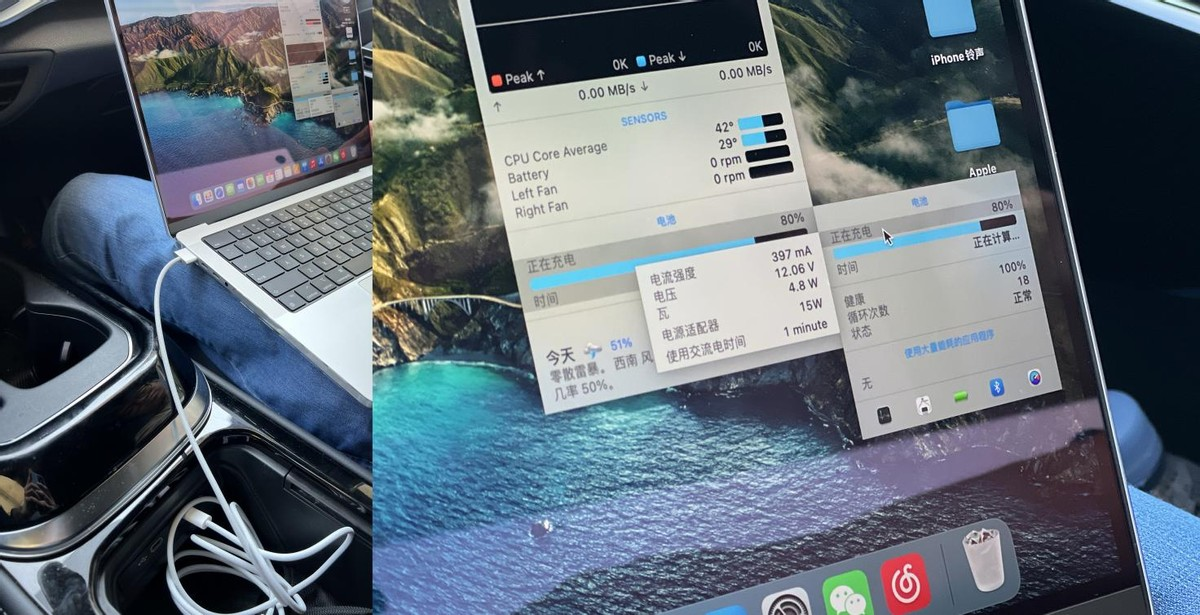 As a family car, the performance of the rear seats is also a concern for many people. The ID4’s rear space is spacious and decent, but the backrest angle of the seat cannot be adjusted, and the cushion is slightly short and hard. For long-distance rides, it is still necessary to stop and rest more.
As a family car, the performance of the rear seats is also a concern for many people. The ID4’s rear space is spacious and decent, but the backrest angle of the seat cannot be adjusted, and the cushion is slightly short and hard. For long-distance rides, it is still necessary to stop and rest more.
The configuration of my car includes heated and massage front seats (yes, you read that right, even though it is achieved by inflating two lumbar supports in a cycle, at least they did it). Even the steering wheel has heating, and considering the price of around 22,000 USD, Volkswagen is quite generous in providing such configurations, don’t you think? 🤔 Unfortunately, there is no seat ventilation, and there are no perforations on the parts that come into contact with the human body, so it can be a bit stuffy in the summer.
Another feature that received high praise is the panoramic sunroof, which has a seamless opening and excellent ventilation. It also comes with an electric sunshade, which is lifesaving in Shanghai’s summer! (I forgot to take a picture, so I took a screenshot from the official website)
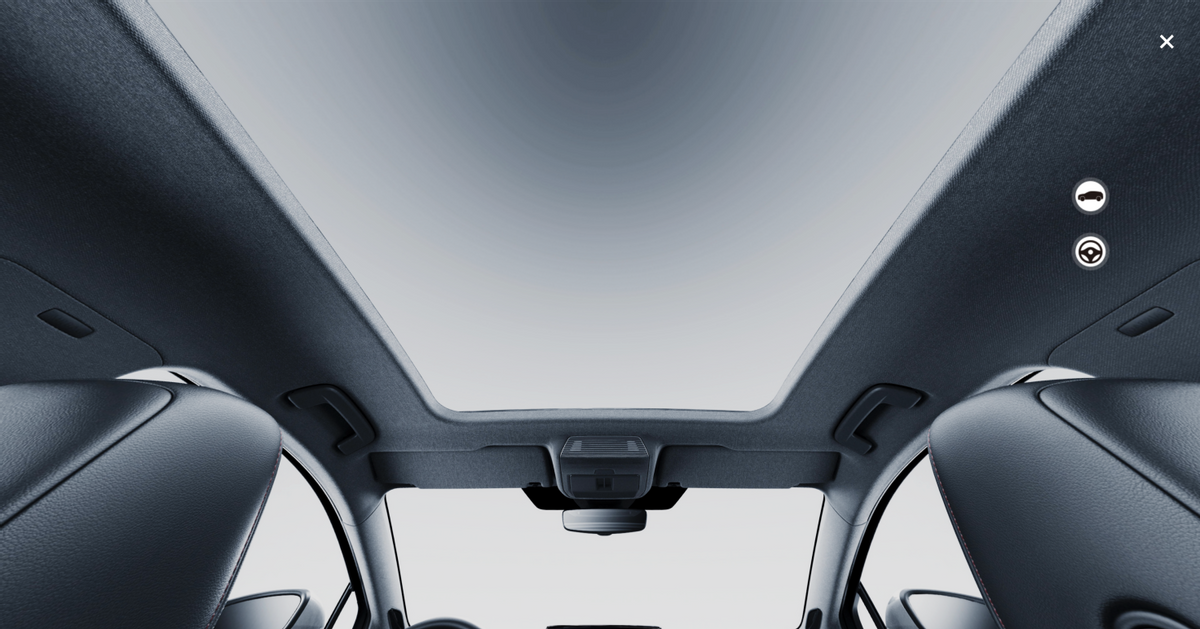
Regarding the workmanship and materials used inside the car, the parts that come into contact with the body are basically soft materials, either leather or soft plastic. The seats are also decorated with some gray fur, with the ID. logo printed on them, which adds a lot of color to the black interior.
It’s a bit regrettable that the test drive car was not equipped with another major selling point, the AR-HUD. It is said to be a head-up display system that is second only to the new Mercedes-Benz S-Class. Many car owners have posted online photos of its display effect, which not only provides basic information such as speed but also displays assistance driving and navigation signage. The display effect in the video demonstration is amazing!
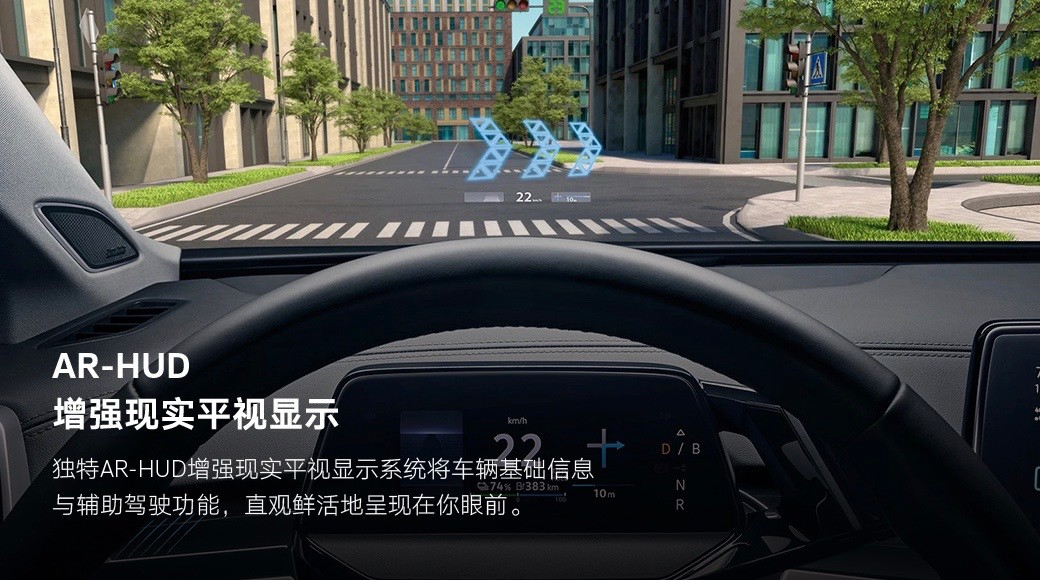
However, it should be limited to the car’s built-in navigation system. I don’t know if it is compatible with CarPlay’s navigation. It probably isn’t, because the light strip under the front windshield will display a flowing indicator if you need to turn while using the car’s built-in navigation, but it won’t work if you use CarPlay. It’s a pity that such a beautiful and rich light strip cannot be used.
City driving experience
On the evening I got the car, I drove the ID4 around the city for a whole night, and the surprises it brought me were far more than what I mentioned earlier.
When I drove it out of the parking lot, I was shocked by its turning angle. After the steering wheel reached what I thought was the “limit,” it could still turn further. At first, I thought I had broken the steering mechanism… The car’s turning angle is surprisingly large. In a parking lot, it can easily maneuver as if it were an A0-grade mini car. In a car of the same size, where a “second push” is needed to complete a U-turn, the ID4 can make you confidently and gracefully complete a U-turn, leaving only the awkward shifting of the other drivers behind.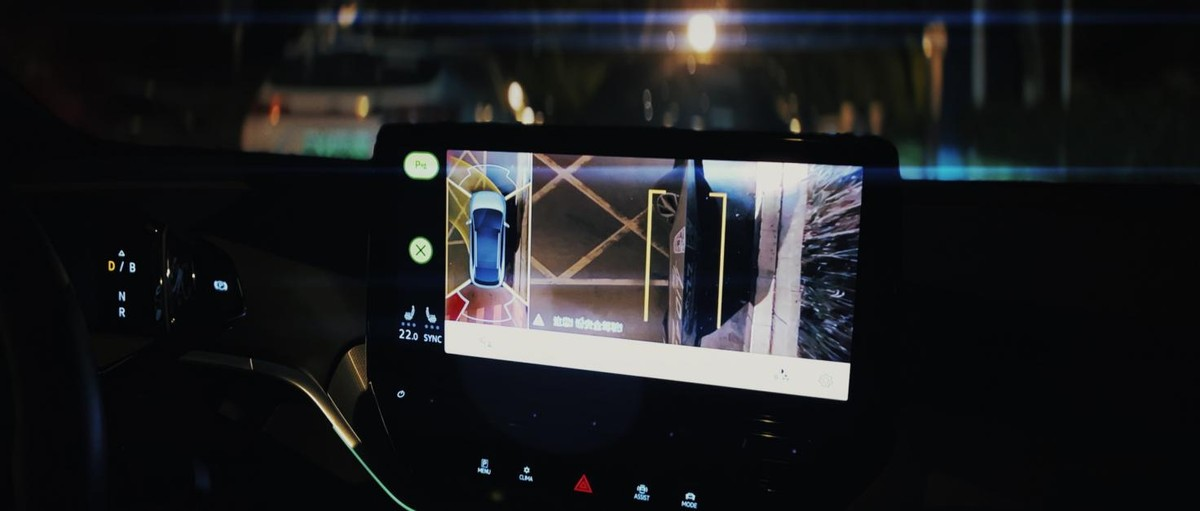
Speaking of the driving performance of city roads, as a product of traditional car manufacturers, I am still very confident in this aspect, but the tuning of ID4 is still very different from traditional VW, let me elaborate briefly.
First, let’s talk about the accelerator pedal. My feeling is that the initial stage is very sneaky, as if Volkswagen wants to show that this is a “electric car” with different power output characteristics from traditional gasoline vehicles. Regardless of the power mode, the first 10% feels like stepping on a cat’s tail. If the force under the foot is not delicate enough, the acceleration sensation will make the passenger’s head hit the headrest. When slowly following the car in the city, it will indeed appear a bit abrupt.
However, the acceleration experience in the middle and later stages will not be so sudden, and the foot feel of the pedal will return to linear and the output will be even. After all, the zero to 100 km/h acceleration in 8 seconds also doomed that ID4 will not be a car for extreme driving enthusiasts. However, the fast response of the electric motor still makes ID4 flexible and capable enough for overtaking and other operations in the city.
In addition, unlike traditional gasoline vehicles, the “accelerator pedal” of electric vehicles also takes into account another task-energy recovery. ID4’s design is different from that of new forces. It is similar to Toyota before, providing two options for the forward gear. One is the normal D mode, which corresponds to low energy recovery with a maximum recovery power of only 2 kW. The second is the B mode, which corresponds to high energy recovery. The highest recovery power can go up to 120 kW, which is very efficient.
Even if you choose “low energy recovery”, it does not mean that a lot of energy will be wasted. This brings us to the brake pedal. ID4’s brake pedal also has CRBS (Kinetic energy recovery function associated with pedal braking force). In simple terms, if the brake is not pressed urgently, the front part will try to use the “electric brake” with full kinetic energy recovery. When more braking force is needed, pressing the brake pedal deeply will allow the mechanical brake to intervene, achieving a greater braking force. Based on this, the initial travel of ID4’s brake pedal feels soft, and nearly half of the travel is related to electric brakes. When you press down further, you will feel the pedal become harder, and the mechanical brakes will also start to intervene.
It takes some time to get used to this type of pedal tuning, as it will initially make people think that they cannot stop the car. But in reality, ID4 has a short braking distance, and pressing down further will result in strong braking force. After getting used to it, when driving in the city, you can have a larger range of foot control when pressing the brake, and you can achieve a smooth braking sensation without being too delicate.
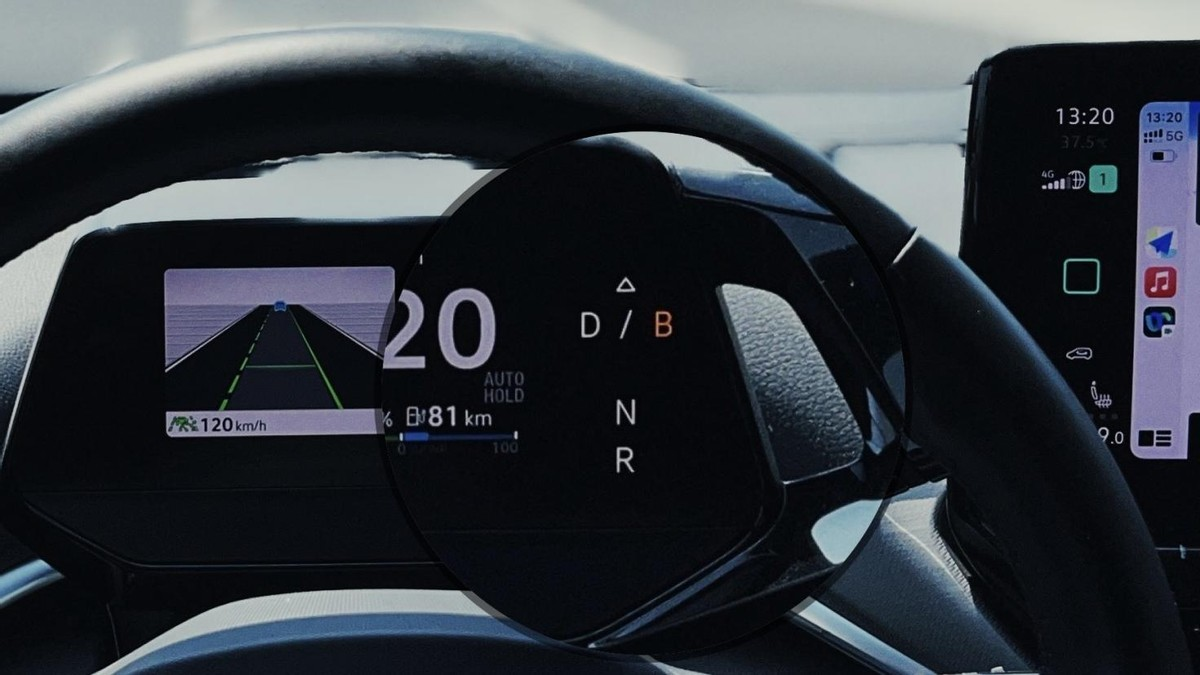 Here’s a little design feature: the accelerator pedal of Volkswagen’s electric car is a “play button▶️”, while the brake pedal is a “pause button⏸️”. It’s quite cute~
Here’s a little design feature: the accelerator pedal of Volkswagen’s electric car is a “play button▶️”, while the brake pedal is a “pause button⏸️”. It’s quite cute~
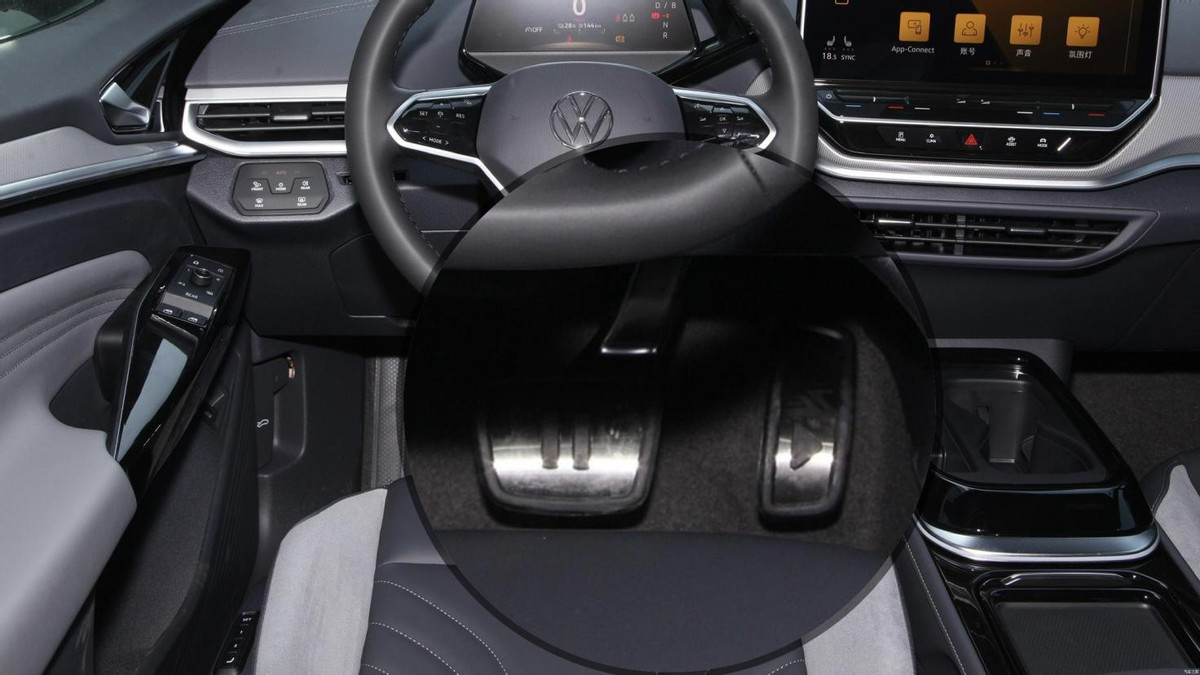
In addition to the two pedals, there is also the steering feel of the steering wheel. This is similar to traditional Volkswagen cars. Regardless of the steering mode, ID4’s steering feel is slightly heavy (heavier than P7 and even slightly heavier than Tesla), and it can be a bit cumbersome to turn at low speeds. The return force is also quite strong, so it is not recommended to let go of the steering wheel and let it return to center. When driving at city road speeds, the steering feel is fine, with fewer virtual positions and less of the “digital taste” of the P7’s steering wheel. The heavy feeling also makes the steering wheel feel well connected to the front wheels (although it is still electronically controlled).
As for the chassis, ID4 does have the “German flavor” that everyone talks about. The chassis is not particularly soft, but it is well supported. When passing over manhole covers or speed bumps, the body does not bounce excessively, and the suspension quickly resolves the vibration and immediately returns to stability. The body roll when cornering is not as significant as some SUVs I have driven before.
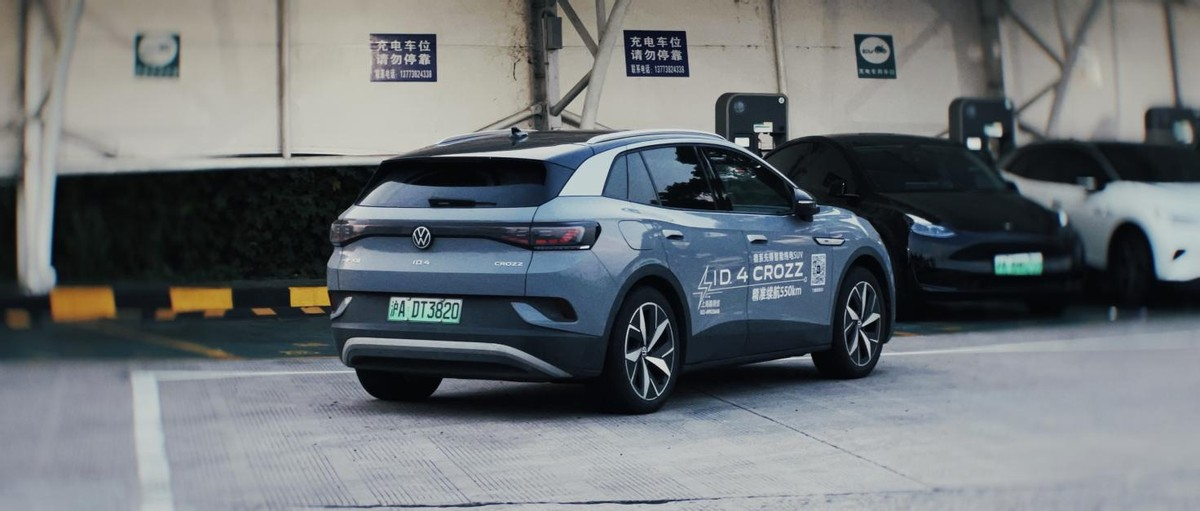
If you drive a bit more aggressively, the chassis will still exhibit the characteristic of pushing the nose harder when cornering. Although this is a rear-wheel-drive car, it is still difficult to make the tail slide out when cornering. However, this car is not intended for people to buy and take to the race track. As the saying goes, it meets its intended purpose.
Oh, by the way, the suspension can be adjusted for comfort and sport modes, but the difference is not particularly noticeable (I even wonder if it is just me). Perhaps I have not found the right testing scenario and method, but let’s leave that aside for now.
Now, let’s talk about this car’s noise and quietness. Wow~ How can it be so good? (shrugs) The test drive car was equipped with a set of 20-inch wheels and an SUV-style body. In theory, tire and wind noise should not be small. However, in actual driving, this car is extremely quiet on city roads, even at a speed of 90 km/h, I can still talk to the people in the car in a volume that you would use under a blanket. It’s amazing, there is nothing else to say, two thumbs up!
High-speed driving experience
After taking delivery of the car, I also tried driving it on the highway. In this part, I will focus on the driving quality, high-speed endurance, and driving assistance and headlights that were not mentioned earlier.
Driving QualityAfter entering the expressway, there is some wind and tire noise inside the car, but overall it belongs to the quiet category. The measured noise in the car is only 62-64 decibels at a speed of 110-120 km/h. The chassis is also very compliant and there is no extra vibration when passing over bridge joints/bumpy areas, and it can hold the body well. The slightly heavy steering wheel in the city is just right on the highway with no sense of floating at all.
However, after getting on the expressway, the steering wheel hardly needs me to actively correct it because I want to talk about the performance of Volkswagen’s assisted driving system, which really exceeded my expectations. As someone who also enjoys studying driving assistance, I will try to describe in as much detail as possible every detail I have observed, and it will definitely allow you to get some information not found in other articles/videos.
Driving Assistance
First, let’s sort out the ID4’s driving assistance configuration: 4 surround view cameras, a monocular camera on the front windshield, 8 ultrasonic radars, 3 millimeter-wave radars, and a capacitive steering wheel (thumbs up for this point). Oh, and there is a fatigue monitoring system that has never been activated from beginning to end, almost forgot😅
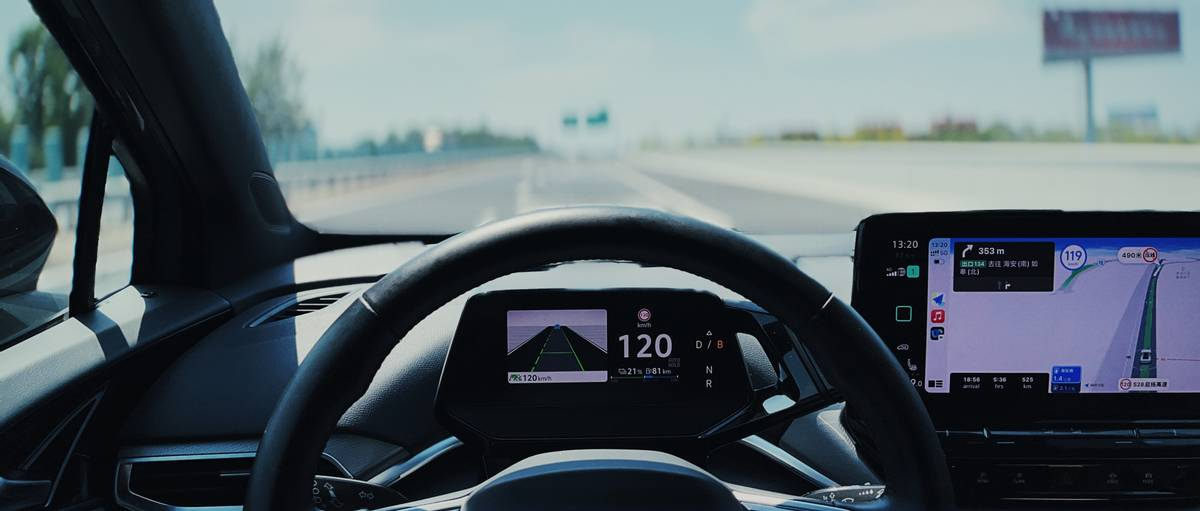
Based on this configuration, what ID4 can do is actually very basic: Full-speed adaptive cruise control (ACC), lane-keeping system (LCC), lane departure warning & correction, and side blind spot monitoring, that’s all.
So how did such simple basic functions exceed my expectations? Actually, this system is easy to use because of two words: Fast and Stable.
Fast, referring to the quick start.
The entire left side of the steering wheel is responsible for driving assistance. It can be started with one button, and the threshold for activation is very low, almost anytime it can be turned on, with the order being speed control cruise, ACC, LCC.
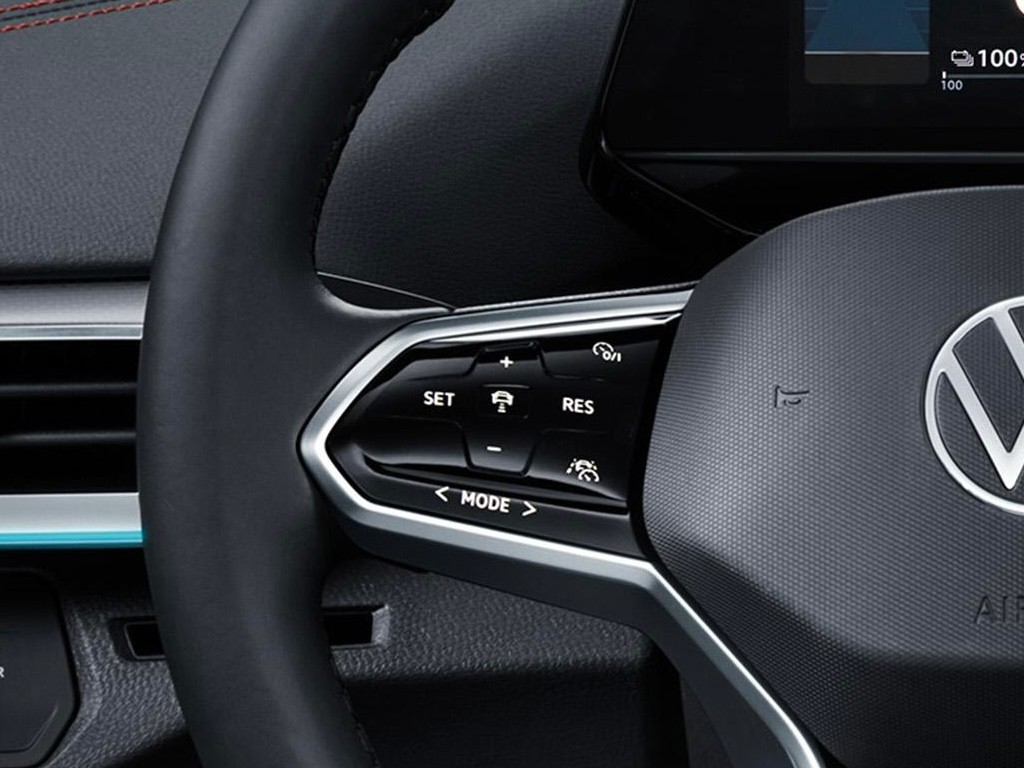
After turning on ACC+LCC, when I need to change lanes, I turn on the turn signal, and LCC will temporarily exit. After I “throw” the car into the new lane, I don’t need to perform any other operations, and the driving assistance will automatically lock the new lane and reactivate LCC. This feels like me and the car are driving together, and I handle what it can’t and then give it back to the car, a wonderful feeling.
When I need to exit, I can lightly step on the brake or directly press the exit button on the upper right side of the steering wheel.Don’t underestimate the exit button on the steering wheel. In most cars, the only way to exit ACC is to step on the brake. However, there is a short period of time when you move your foot from the brake pedal to the accelerator pedal during cruising, during which the vehicle goes through a process of “ACC exits – vehicle starts kinetic energy recovery – foot goes to accelerator pedal – vehicle accelerates again”.
Although this is a small detail, it can cause passengers in the car to experience a “sudden brake and then acceleration” sensation, which can make them uncomfortable if it happens too often. On the ID4, I can keep the speed constant by pressing the accelerator pedal, and then simply exit the ACC to change lanes or overtake without experiencing the sudden brake and acceleration sensation.
With these function buttons, I can even drive in the city without stepping on the pedal at all (not recommended) by turning on and off the assisted driving at appropriate times. When there is a lane, I can start adaptive cruising and lane keeping; when there is a red light and a car in front, the vehicle will follow the car and brake to a stop without touching the pedal, just keep your hand on the steering wheel.
The most I need to take over is when there is no car in front of me at the red light, I press the exit button, recover kinetic energy slowly to the stop line and tap the brake pedal, or when passing through an intersection where the lane disappears temporarily, I help the car turn in the right direction, and LCC will automatically restart after the car is aligned with the lane.
From the driver’s perspective, it’s all done in one go, and the passengers will not feel that the vehicle has switched from automatic cruise control to manual control, because there will be no voice or bell prompts in the car during all these operations, only visual prompts on the dashboard.
As for the prompt sound of assisted driving, let me say a few words again. Some people may think that it is not safe without voice prompts, but if we think back to when cars used to use cruise control, were there such verbose prompts? No.
My XPeng car has very long voice prompts and sound effects when the assisted driving is activated. Although this kind of voice prompt is good for beginners, it is redundant for me when I already know this driving assistance system so well. It often disrupts the conversations or rest of the passengers in the car, so when someone is resting in the car, I dare not activate the driving assistance system for fear of disturbing the passengers with the exit or prompt sound.And the reason why the manufacturer provides so many prompts is because some new car companies have left the impression on consumers that “this car can drive automatically” when promoting their “assisted” driving technology. At the beginning, Volkswagen claimed that this is a set of semi-automatic driving assistance functions, just like the previous cruise control, which assists you in driving instead of taking over the driver’s operation. These two concepts have essentially different implications from the perspective of consumer cognition. Without creating high expectations, there is no need for long and noisy voice prompts.
I think that human-machine co-driving is inevitable before the vehicles have fully autonomous driving capabilities at the current stage. Volkswagen’s driving assistance system considered this from the beginning of its design and developed a set of excellent human-machine co-driving features.
Although the driver is essential, we still hope that this system can perform as well as possible in its own job field, so that the driver can relax as much as possible, which brings us to the second point.
Stability, referring to stable performance.
Although Volkswagen’s assisted driving configuration is not high, the stability of ACC and LCC is even higher than that of XPeng’s hardware configuration, manifested in:
-
The lane keeping is stable, without deviation throughout the process, and the steering wheel is also steady, without swinging left or right, giving people strong confidence.
-
When following in a traffic jam, the car maintains sufficient proximity to the front car, with a quick start reaction, not easy to be cut in.
-
It is also decisive when passing through larger curvature bends. South Pudong Bridge bend can be easily passed without driver intervention.
-
Even when encountering Y-shaped forks where only one side of the road marking is available, it can still maintain its own lane. On the contrary, XPeng will still stay in the middle of the lane when the road markings slowly separate, leading directly to the water horses…
-
It can still start up stably without deviation even in heavy rain conditions and is not affected by the wiper speed.
-
The ACC acceleration and braking are smooth in response, with no hesitation in acceleration and no jerk in braking, and the acceleration intensity can be adjusted in three gears. You can choose sports if you need quick reaction or comfortable/economic if you want gentle and smooth acceleration.
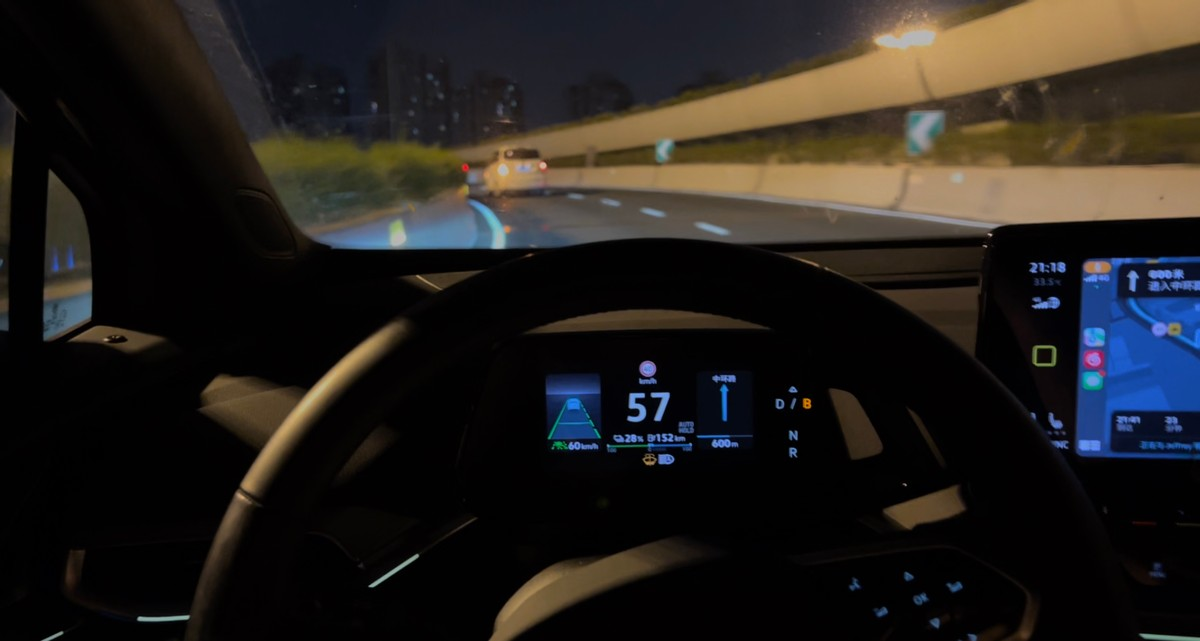
Overall, Volkswagen’s assisted driving system can give me strong confidence, with stable and consistent performance in both high-speed and urban driving. These characteristics of not disturbing the driver and natural feel without being abrupt also make me more willing to activate this driving assistance system at any time.
Phew~ The part of driving assistance is a bit long, mainly because Volkswagen’s driving assistance system is so user-friendly and capable that I have too much to say about it. It really makes me cry.
High-speed endurance
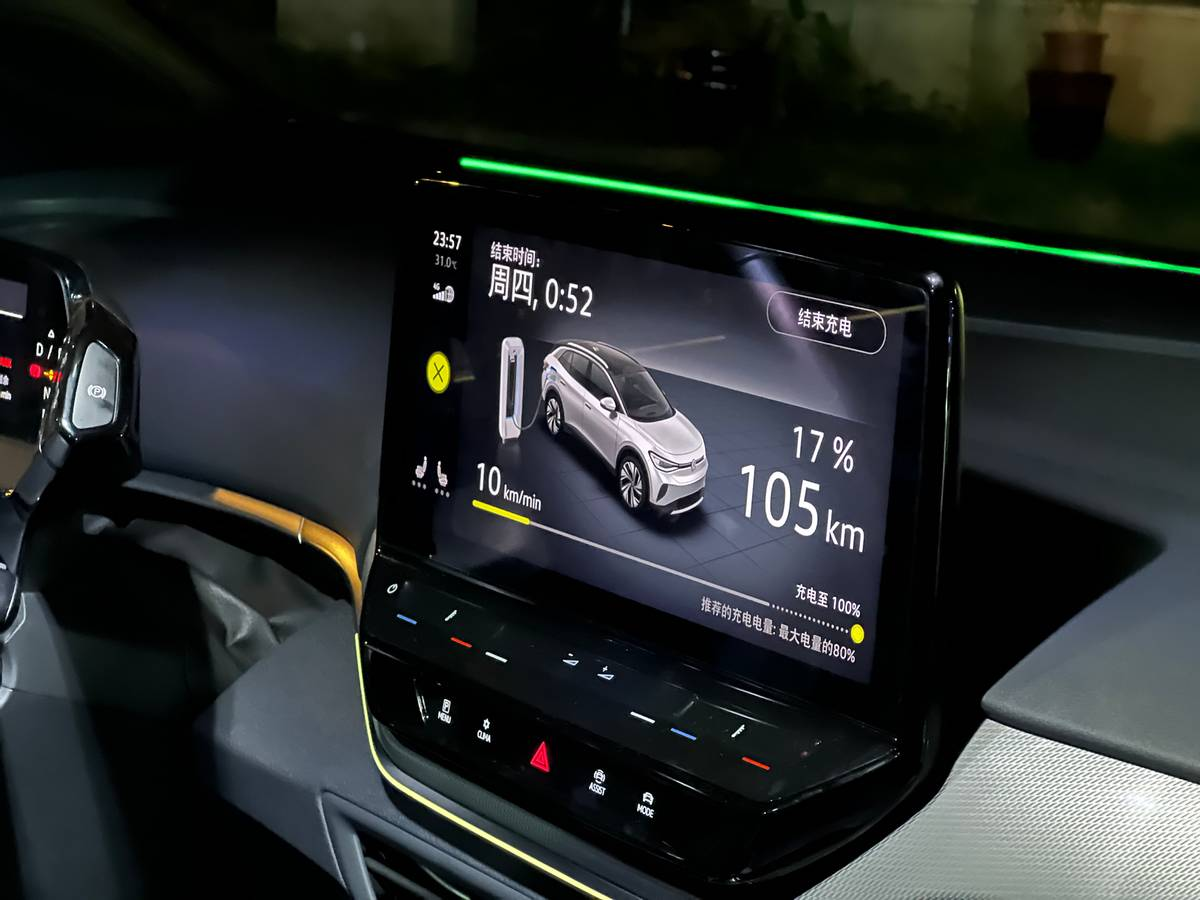
After talking about the great benefit of the driving assistance system, let’s take a look at the high-speed range performance that may worry you and me. This time, I also recorded the energy consumption during high-speed driving.
The journey was from Shanghai to Qingdao, a total distance of 757 km. In the morning, the car was charged to 88% and started the journey. When unplugged, it showed a range of 465 km. After driving for three minutes, I don’t know if the algorithm automatically recalculated or something else, but the remaining range dropped to 376 km, still at 88% battery level.
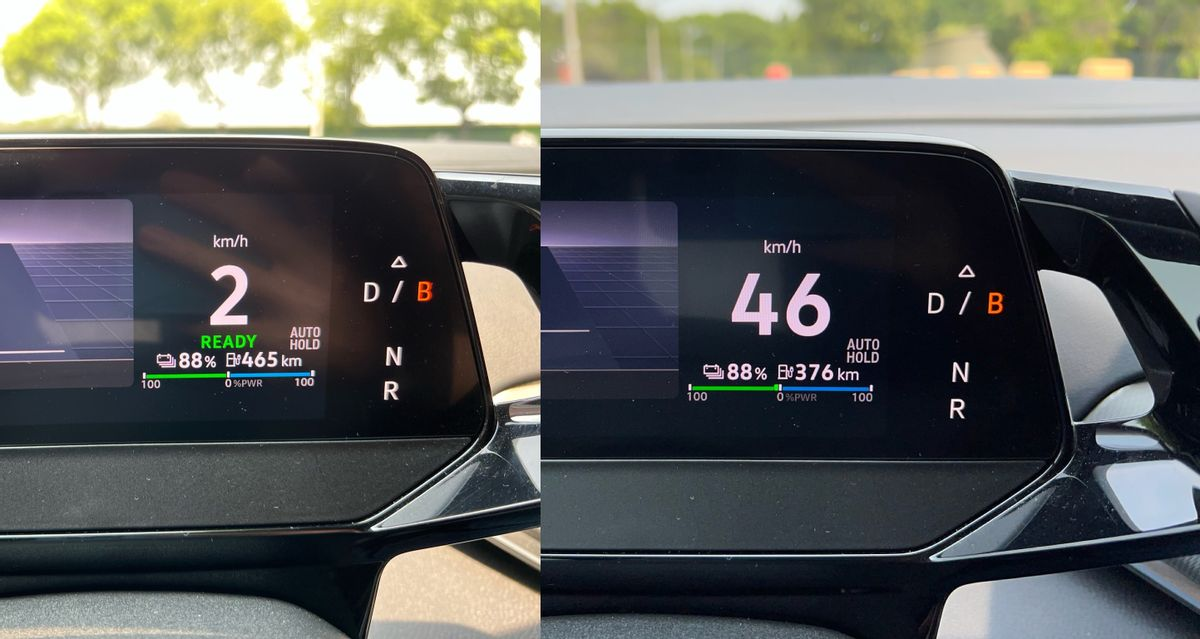
After leaving the city, I got on the highway. I charged the car for the first time at Dongtai service area after driving 267 km. The battery level was 12%, the energy consumption on the highway was 20.9 kWh/100 km, and the remaining range was 60 km. The actual mileage and the consumed mileage had an error of about 40 km, but the accuracy improved as I drove more, indicating that there was a calibration algorithm. The charging time was 57 minutes, and the battery level charged to 77%, with a remaining range of 350 km displayed on the dashboard.
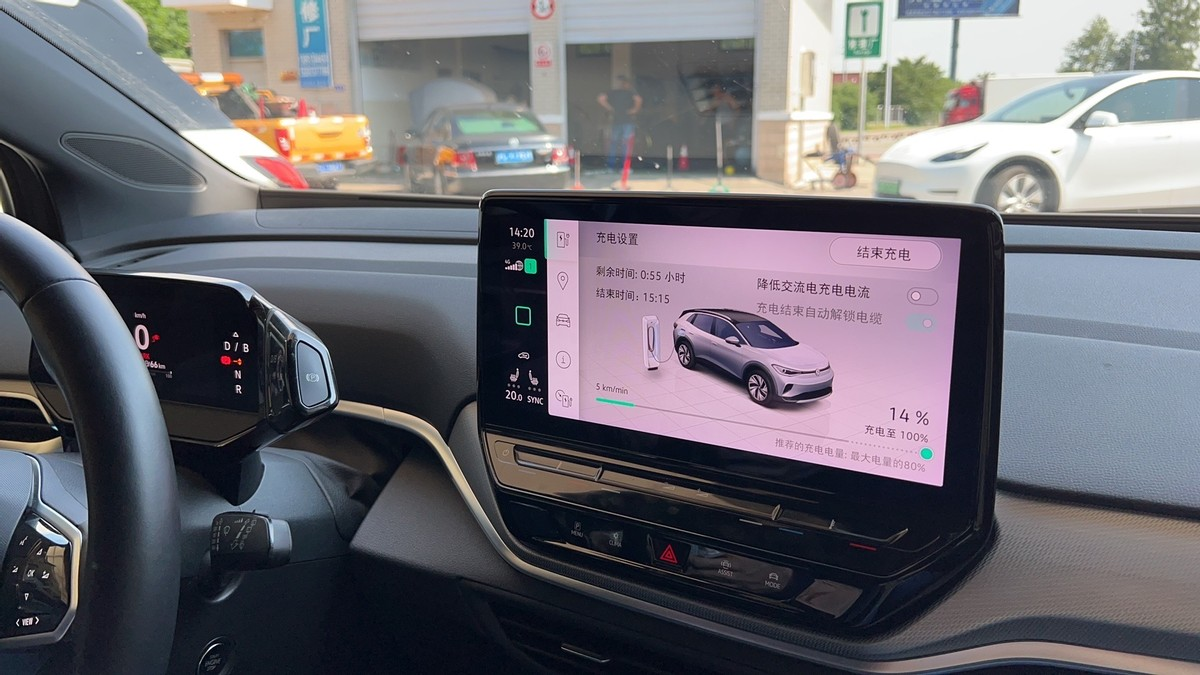
The second charging took place at Haizhou Bay service area, which was close to 300 km from Dongtai. The remaining range was 9%, and the dashboard displayed remaining range of 39 km, with an error of only about 10 km, which also confirmed my previous guess.
Overall, according to this calculation, the full-range performance of this car on highways can exceed 400 km. This is still in the hot summer, with air conditioning on and limited-speed driving. Although not very long, it is enough, because even if the range is 600-700 km, it is necessary to stop and rest every two or three hours.
As an aside, the charging experience at the highway service area is really bad… Some chargers that are marked with 120 kW actually can only run at a power of about 20-odd kW… Moreover, each service area has only four chargers, which is slow and often requires queuing… how can we dispel the anxiety about the range of electric vehicles running on the highway…
IQ.Light
In the evening, this car’s other high-tech feature, the headlights or “Deng” (pun, count the dollars), was on. The quality of the headlights has a very significant impact on driving safety!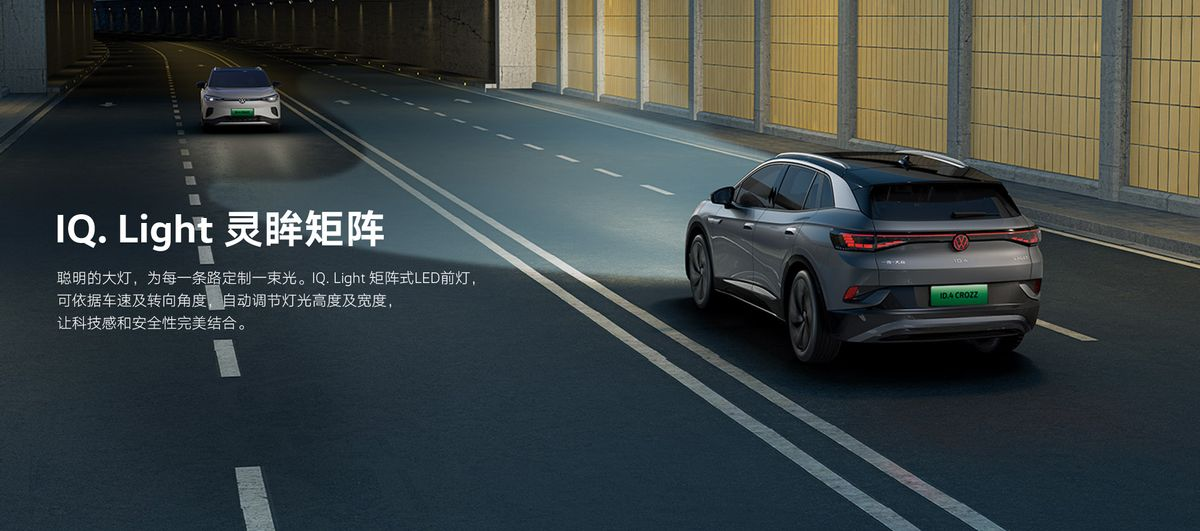
ID4 is equipped with extremely rare dynamic steering headlights and matrix-style headlights of the same level. The impression that matrix-style headlights gave me in the early years was that only C or D-class luxury cars of BBA brands could be equipped with them, and usually at a very high cost. I really didn’t expect to find this configuration available in this level and price, and this was also my first experience with the wonderful matrix-style headlights.
With the low beam headlights on, if you turn left or right, the headlights will swing left and right in response to the movement of the steering wheel, with a very large amplitude that can point directly to the apex on corners.
On high-speed road sections without streetlights, the automatic high-beam headlights are turned on and the lights slowly expand, automatically avoiding the front car, while still providing a brighter field of vision without affecting others. It’s as if the car has come to life. This feeling is like Avatar, where the person and the riding animal are connected to each other and the car’s eyes look where I want to go. What is an intelligent car! (Tactical backflip) This feature should be mandatory by law! It would reduce so many high beam dogs on the road 🙏
Conclusion
After spending a few days with the ID4, it really overturned my perception of traditional car companies. The top students of the past are still silently working hard. Although there are many young people with various talents who have temporarily overshadowed him, he has not been discouraged and has relied on his own hard work and steady pace to firmly refute the claim that “elderly people will be photographed by young people on the beach”. The experience and technology accumulated over so many years in this field cannot be easily surpassed.
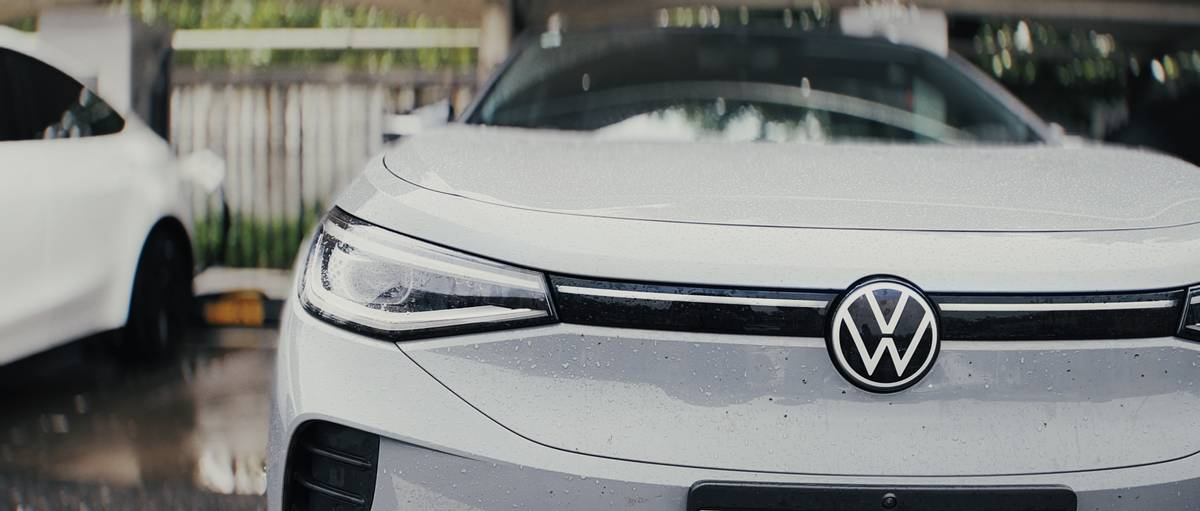
Undoubtedly, cars made by Volkswagen do not have the same whimsical and trendy qualities that new car companies have. Instead, they focus on making a solid foundation of a car and adding their own creativity on top of it.
And regarding the quality, ID4 has done an outstanding job. The smooth and quiet cabin, bright lighting, solid craftsmanship and materials, even the quiet windshield wiper motor, excellent feel of the turn signal lever, and high-end sounding alarms all convey the word “quality” to the user at all times.
Of course, this car is not perfect. As I mentioned at the beginning, the ID4 is positioned as a practical city tool car for home use. The high seating position and somewhat weak power won’t give you a strong desire to drive hard, it’s just meant to be driven smoothly on a daily basis.
In terms of intelligence, it still lacks some features:- There are not so many things that can be controlled by voice, only some basic instructions (I don’t like to use voice commands either, I prefer doing things manually);
- Some functions such as automatic parking and summoning are missing, which I still use occasionally;
- The car key can be automatically unlocked by approaching but cannot be automatically locked by leaving, and the car needs to be locked by pressing the lock button on the driver’s door handle. Also, if the windows are open, they will not automatically close when locked (why baby why? I really don’t understand this).
There are also some usage issues:
- The charging port cover is manual, and I always forget to close it because I am used to electric covers;
- The wireless charging pad is difficult to reach and sometimes doesn’t charge properly;
- It takes half a minute to restart the air conditioning after turning it off;
- The driver’s window control only has two buttons, and you have to touch “REAR” or other buttons to control the rear windows.
However, these issues I listed above are mostly minor, and if the manufacturer cares about user feedback, most of them can be easily improved in future models. The great thing about this car is that it doesn’t have any major pain points and is a car that almost anyone can buy without hesitation. Making a car for the people and by the people, Volkswagen got it right with the ID4!
Every design and detail of the Volkswagen ID4 is aimed at creating a car for the people and by the people, and it is a precise answer that perfectly fits its identity and brand. This is my final evaluation of the ID4.
Conclusion
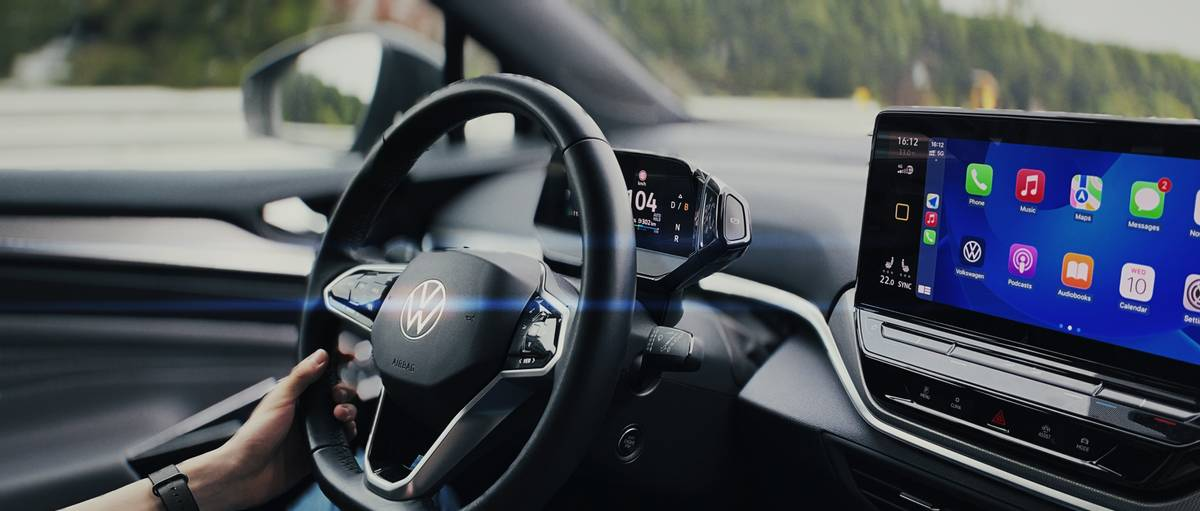
As a new smart car owner of a “smart car” from a new car manufacturer, driving the ID4 has made me rethink what “intelligent” really means and what makes a car a “smart car” for the new age. Before this, I thought that having a good car system and voice control was enough to be considered intelligent, and I thought that adding some LED lights outside the car and having them flash and dance in different patterns was also considered intelligent. But, is that all there is to being intelligent?
What is the definition of “intelligence”? I actually looked it up and one of the definitions is: having some of the wisdom and abilities of humans.
So, if a car can communicate its thoughts to you through various interactions, is that considered intelligent?
If a car can assist you in driving and exploring the distance without disturbing your appreciation of the scenery along the way, is that considered intelligent?
If a car can illuminate the area you are looking at, but knows how to be courteous and not shine its high beams into the eyes of other drivers, is that considered intelligent?
Currently, the new energy vehicle market is like the mobile phone market ten years ago, where everyone is showing off their own unique features and bringing us many interesting and novel functions. But I also hope that while car manufacturers are fully engaged in researching “show-off” and “unprecedented” advanced features, they can occasionally calm down, pay attention to the details, and build a solid foundation before building more grandeur on top.After all, as drivers, we cannot always experience functions like watching movies or playing games, but the excellent calibration, convenient operation, and advanced texture that can be felt at all times while driving are what truly matter.
However, the new energy vehicle market is just getting started, and there are various possibilities for its future. (Epic BGM starts) What we need to do is to wait patiently and expect that there will be one day… someday!! (music reaches a climax)
We need more charging stations at the high-speed service areas.
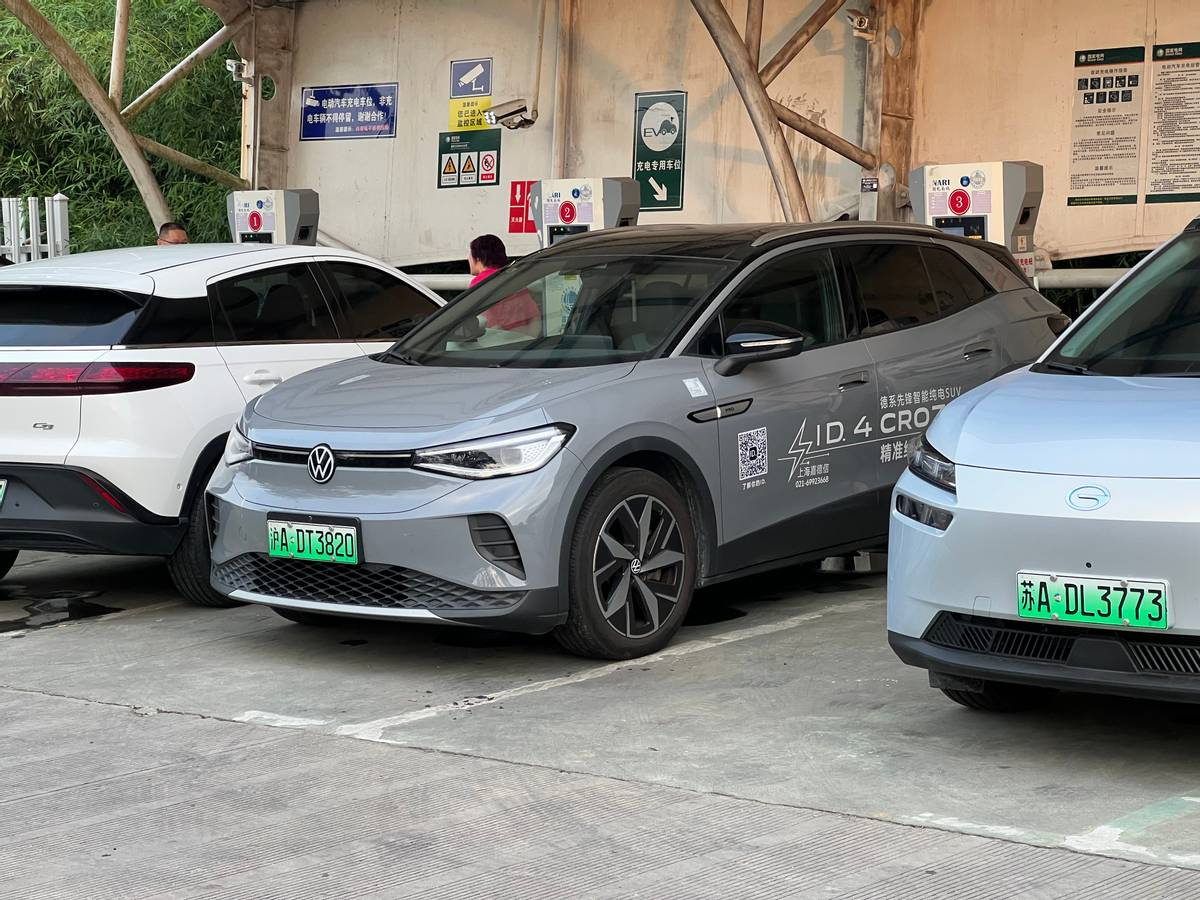
This article is a translation by ChatGPT of a Chinese report from 42HOW. If you have any questions about it, please email bd@42how.com.
